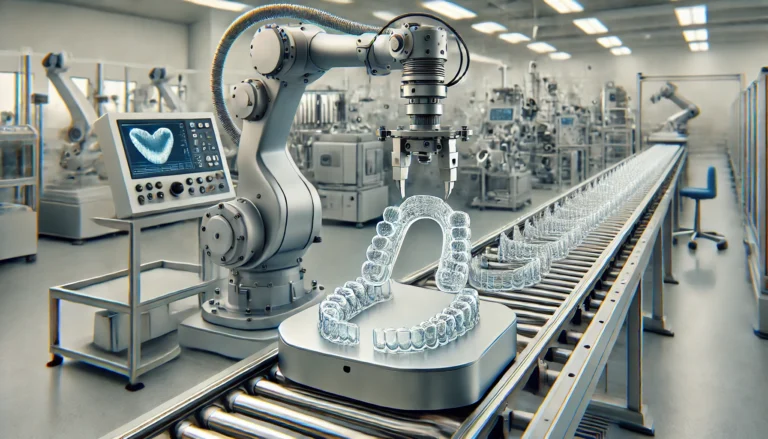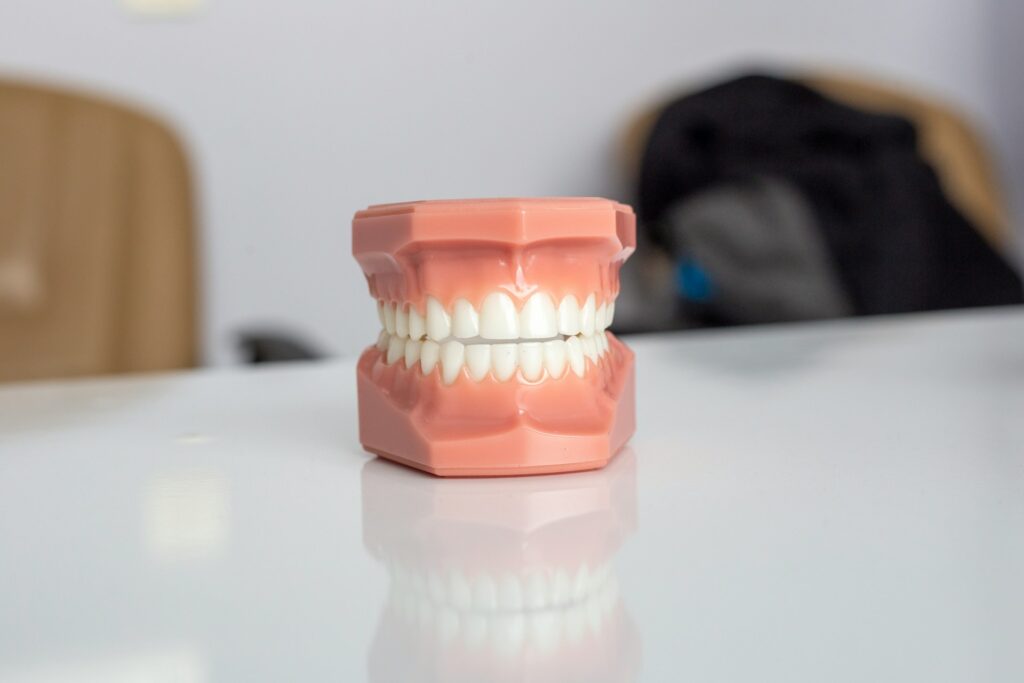
Invisalign has truly transformed our perspective on orthodontics by presenting a clear, comfortable, and modern alternative to traditional braces.
This discussion will delve into the mechanics of how Invisalign works, outline the step-by-step process involved, and highlight the distinctive benefits it offers. It is also important to consider its limitations and how it stacks up against conventional braces.
Throughout this exploration, we will discuss the scientific principles behind this treatment and provide tips for maintaining oral health while you work to achieve a straighter smile. Whether you are new to Invisalign or simply curious about its effectiveness, this guide aims to offer valuable insights.
How Invisalign Works: Crucial Process for a Straighter Teeth

Invisalign represents a significant advancement in orthodontic treatment, employing clear aligners to straighten teeth and enhance smiles while emphasising patient comfort and aesthetics.
Unlike traditional braces, Invisalign aligners are both removable and nearly invisible, making them a desirable choice for individuals looking to straighten their teeth without altering their appearance.
The process begins with a thorough dental consultation, during which a personalised treatment plan is developed. This plan utilises state-of-the-art digital scanning and 3D imaging technology to enable gradual tooth movement, ultimately leading to optimal dental health outcomes.
What Are the Steps Involved in the Invisalign Process?
The Invisalign process consists of several important steps that ensure a smooth and effective teeth alignment journey tailored to each patient’s unique needs.
It all begins with a comprehensive dental consultation, where the dental professional assesses the patient’s oral health and determines whether Invisalign is a suitable treatment option. After this assessment, advanced digital scanning is performed to create a precise 3D model of the mouth. This model is then used to design a series of custom aligners that will gradually shift the teeth into their desired positions.
Once the aligners are prepared, patients receive their first set and are instructed on how to wear them for at least 20 to 22 hours a day. This compliance is crucial for achieving optimal results. Regular check-ups with the dental team are also essential, as they allow for progress monitoring and any necessary adjustments to the treatment plan.
Additionally, educating patients on proper aligner maintenance, including effective cleaning techniques and how to manage any discomfort, is a key component of the process. This collaboration between the patient and provider creates a supportive environment that is vital for successfully achieving the desired alignment.
What Are the Benefits of Invisalign?
Invisalign provides numerous benefits for those looking for effective teeth straightening options while still maintaining a pleasing appearance.
One of the key advantages of Invisalign is its use of clear aligners, which offer a discreet solution for issues like malocclusion and teeth crowding. This means individuals can undergo orthodontic treatment without the noticeable metal brackets and wires that are associated with traditional braces.
Moreover, the comfort of these removable aligners significantly improves the overall patient experience, as they can be easily removed during meals and for oral hygiene routines.
1. Clear and Discreet
One of the primary advantages of Invisalign lies in its clear and discreet design, which allows individuals to align their teeth without drawing attention to their orthodontic treatment. The aligners are crafted from a transparent material that fits snugly over the teeth, rendering them nearly invisible to the casual observer. This feature provides a significant aesthetic benefit compared to traditional metal braces.
The invisibility of Invisalign not only enhances the overall appearance but also plays a crucial role in boosting patients’ self-confidence throughout their treatment journey. Many individuals find themselves more at ease in social situations, as they can smile freely without the concern that bulky metallic braces might detract from their features.
This newfound confidence fosters a positive psychological outlook, aligning seamlessly with the principles of aesthetic dentistry, which aims not only to achieve a functional bite but also to enhance one’s natural beauty.
As patients progress through their treatment, they often experience both physical and emotional transformations, leading to an increased satisfaction with their smile and overall well-being.
2. Removable Aligners
One significant advantage of Invisalign is that the aligners are entirely removable, offering patients greater flexibility and ease of use compared to traditional fixed braces. Individuals can easily take out their aligners during meals and while performing daily oral hygiene routines, making it straightforward to maintain proper dental care throughout the treatment process.
This convenience not only facilitates better oral hygiene but also enhances overall comfort, allowing wearers to enjoy their favourite foods without any restrictions. By removing the aligners, they can effectively brush and floss their teeth, which minimises the risk of plaque buildup and cavities.
It is important for individuals to follow the recommended wear schedule to ensure that the treatment remains effective; wearing the aligners for the advised 20 to 22 hours a day is essential for achieving the desired results within the estimated timeframe.
This blend of comfort and personal responsibility enables patients to navigate their daily lives with confidence while improving their smiles.
3. Comfortable to Wear
Invisalign aligners are thoughtfully designed with patient comfort as a priority, employing advanced aligner technology to offer a gentle yet effective method of teeth straightening. Unlike traditional braces, which can lead to discomfort and irritation from metal brackets and wires, Invisalign aligners exert gradual pressure on the teeth, resulting in minimal discomfort during the movement process.
This unique approach not only enhances comfort for individuals but also fosters a more enjoyable experience throughout the treatment journey. As patients transition to wearing aligners, they often discover that adapting to the feel of the aligners is quite simple, which can significantly boost their overall satisfaction.
It is important to engage in open discussions about any personal experiences with discomfort, as well as any need for adjustments that may arise during treatment. Such conversations can pave the way for tailored solutions that ensure optimal comfort while allowing progress to continue smoothly.
4. Customised Treatment Plan
Invisalign’s customised treatment plans serve as a fundamental aspect of its effectiveness, as each aligner is specifically designed to accommodate the unique dental anatomy and treatment objectives of individual patients.
By utilising advanced digital scanning and 3D imaging technology, dental professionals can create an accurate representation of the patient’s mouth, allowing for the development of highly customised aligners that effectively guide teeth into their ideal positions.
This level of personalisation not only improves the efficiency of the treatment but also enhances the patient’s comfort and confidence. By working closely with dental experts, individuals have the opportunity to actively engage in their orthodontic journey, which can lead to higher satisfaction rates and better adherence to the treatment plan.
Dental professionals are essential in continuously monitoring progress and making necessary adjustments to ensure that treatment goals are achieved in a timely manner. This tailored approach ultimately results in improved outcomes and underscores the significance of personalised care in dentistry.
What Are the Limitations of Invisalign?
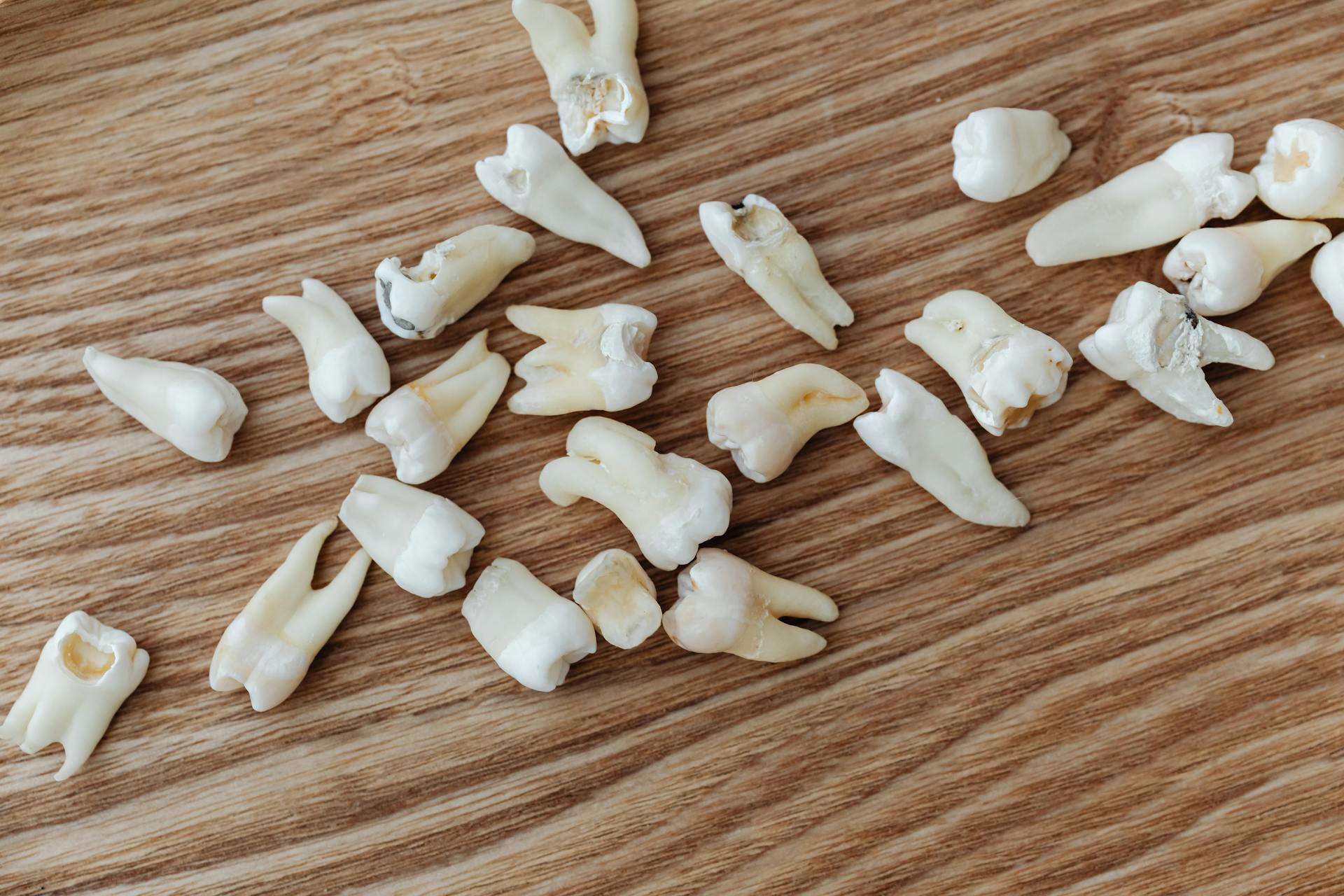
Invisalign offers many benefits; however, it is important for prospective patients to be aware of its limitations before embarking on their orthodontic journey.
One significant drawback is that Invisalign may not be suitable for severe cases of malocclusion or complex dental issues that require more intensive orthodontic treatments.
Furthermore, patient compliance plays a crucial role in the success of the treatment, as aligners must be worn for the recommended duration to achieve the desired outcomes.
1. Not Suitable for Severe Cases
Invisalign may not be the best fit for individuals facing severe cases of malocclusion or significant orthodontic issues that require more comprehensive treatment options. Patients dealing with complex bite alignment problems or severe dental crowding might find that traditional braces or other orthodontic interventions are necessary to achieve effective results.
Additionally, those with dental anomalies such as rotated teeth, large gaps, or impacted teeth may discover that clear aligners do not offer the level of control and precision needed for their specific situations.
It is essential for individuals to undergo a thorough orthodontic evaluation, which can help in identifying the complexities of their dental conditions. This assessment enables the development of a tailored treatment strategy that addresses specific needs, ensuring optimal outcomes, whether that involves Invisalign, braces, or a combination of treatments designed to enhance both functionality and aesthetics.
2. Requires Self-Discipline
One of the challenges associated with Invisalign treatment is the need for self-discipline and commitment from patients to follow their wear schedule. For Invisalign to work effectively, aligners must be worn for 20 to 22 hours each day, which demands a high level of patient compliance to ensure optimal tooth movement and treatment effectiveness.
This commitment is crucial, as failing to wear the aligners as instructed can lead to delays or less than ideal results. Therefore, grasping the significance of motivation throughout this journey is essential. Patients should actively engage in their treatment plan by tracking their progress and setting achievable goals to maintain their enthusiasm.
To support a consistent wear schedule, establishing daily reminders or routines for aligner use can be quite helpful. For example, removing the aligners only during meals and for oral hygiene can create a structured approach. Additionally, keeping the aligner case nearby and packing it when on the go can promote responsible wear, ultimately contributing to successful smile transformations.
3. May Cause Temporary Discomfort
Invisalign is designed with comfort in mind, but some patients may experience temporary discomfort or pressure during the initial days of wearing a new aligner. This is a natural aspect of the treatment process, as the aligners gently apply pressure to encourage the gradual movement of teeth into their desired positions.
Typically, any soreness or discomfort peaks within the first few days after receiving a new set of aligners, but it usually subsides as the mouth adapts to the added pressure. Many patients find that over-the-counter pain relief can effectively manage this discomfort, along with simple adjustments like opting for softer foods during the first couple of days.
It’s also essential to maintain open communication with dental professionals. They can offer personalised advice and reassurance, ensuring that any concerns regarding discomfort are addressed promptly. Engaging with a professional can also provide clarity about the overall treatment timeline and what to expect along the way.
How Does Invisalign Compare to Traditional Braces?
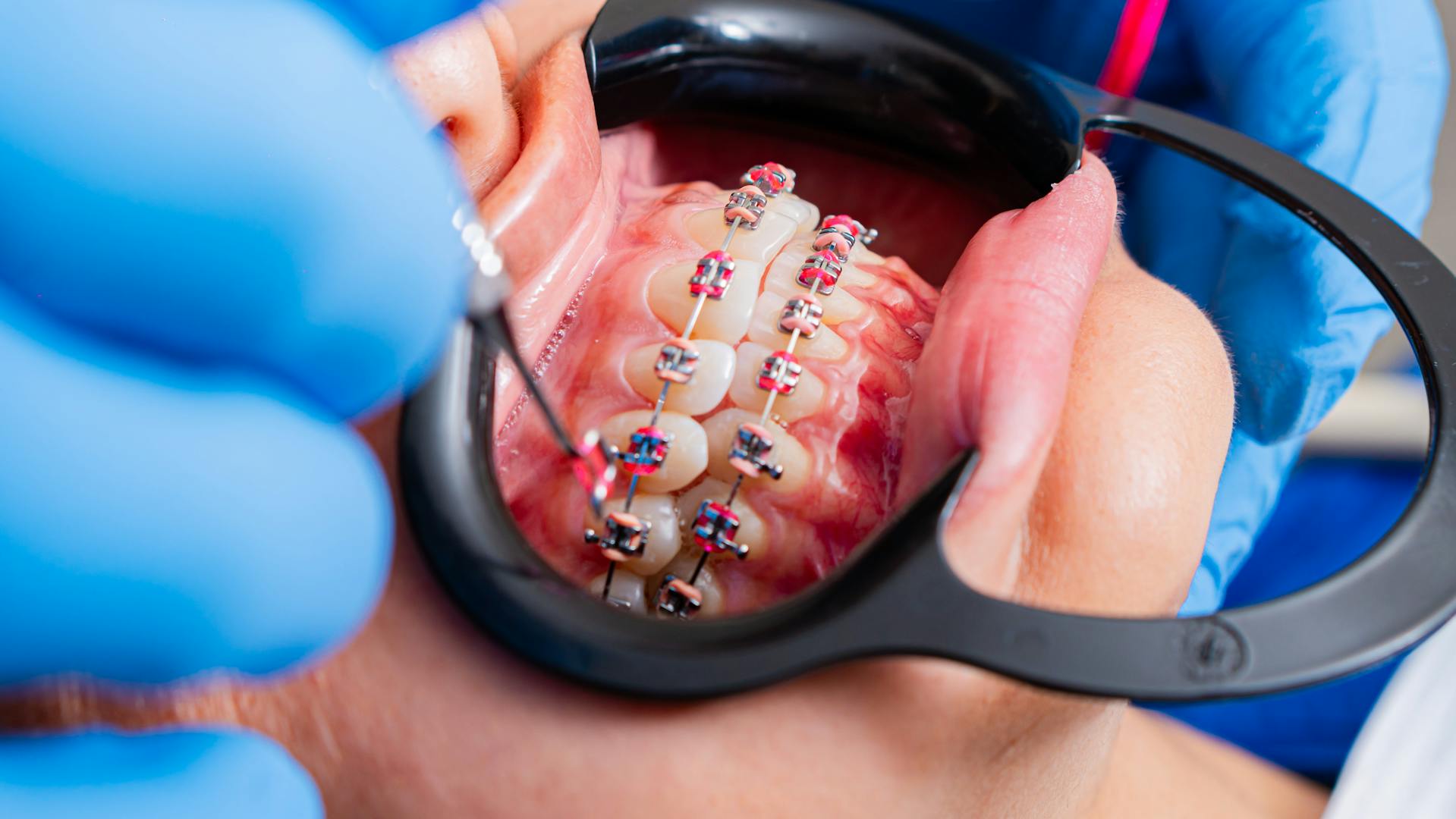
When evaluating orthodontic options, many patients often find themselves contemplating how Invisalign compares to traditional braces regarding effectiveness and overall experience.
Invisalign presents several distinct advantages, including the use of clear aligners and enhanced comfort. On the other hand, traditional braces may be better suited for more complex cases that require more significant adjustments.
Additionally, factors such as treatment duration, comfort level, and cost are essential considerations that significantly influence the decision-making process.
1. Appearance
In terms of appearance, Invisalign clearly outshines traditional braces. The virtually invisible aligners allow patients to straighten their teeth without the noticeable metal brackets and wires associated with conventional braces. This aesthetic advantage is particularly appealing to both adults and teenagers who value discretion during their orthodontic treatment.
Plus their discreet appearance, these aligners also offer a level of comfort that many users find appealing. Unlike traditional braces, which can often feel bulky and irritating, the smooth plastic of Invisalign is gentle on the gums and cheeks.
This distinction can significantly impact the decision-making process for individuals exploring orthodontic solutions that align with their lifestyle and self-image. As a result, when given the option, many people may find themselves gravitating towards the innovative design of Invisalign, viewing it as a more suitable choice that matches their aesthetic preferences.
2. Treatment Time
The treatment time for Invisalign and traditional braces can differ significantly, with many patients often achieving faster results with Invisalign due to the reduced number of orthodontic adjustments required. Typically, Invisalign treatment lasts between 12 to 18 months, depending on the complexity of the case, whereas traditional braces may extend beyond 24 months.
The specific duration for each option can also depend on the particular dental issues being addressed. For example, more complex alignment problems or severe dental crowding may require a longer treatment period regardless of the method chosen.
Patient compliance is crucial; those who consistently wear their aligners as directed are likely to see their treatment progress more quickly. It is important for individuals to have open and honest discussions with their dental professionals to establish realistic expectations regarding treatment timelines. This dialogue ensures that patients understand how their choices and habits can impact the overall length of their orthodontic journey.
3. Comfort
In terms of comfort, many people tend to prefer Invisalign over traditional braces, primarily because there are no metal components that can irritate the gums and cheeks. The smooth plastic material of Invisalign aligners offers a comfortable fit, which helps to minimise any discomfort during the movement of teeth.
Moreover, the fact that aligners can be removed for eating and oral hygiene allows users to enjoy their favourite foods without any restrictions—a luxury that traditional braces simply do not provide. This removable feature not only alleviates discomfort associated with eating but also supports better oral health throughout the treatment process.
Additionally, many individuals find the clear aligners to be less noticeable compared to the metal brackets of conventional braces. This can significantly enhance their self-esteem during the orthodontic journey.
Therefore, when considering an orthodontic solution, it is important to take personal comfort preferences into account as a key factor in the decision-making process.
4. Cost
Cost is a significant factor to consider when comparing Invisalign and traditional braces, as treatment expenses can vary considerably depending on individual circumstances and the complexity of the treatment plan. The cost of Invisalign in the UK is often higher than traditional braces; however, many patients feel that the comfort, aesthetics, and convenience of clear aligners make the investment worthwhile.
Insurance coverage options can also influence this decision, as some dental plans may offer partial reimbursement for braces but not for Invisalign. Individuals considering these treatments should thoroughly review their insurance policies and inquire about financing options provided by their orthodontists.
These financing plans can help make the overall expense more manageable by allowing patients to spread the cost over time. Consulting with dental professionals can provide tailored estimates that reflect specific needs and financial situations, helping individuals make well-informed choices regarding their orthodontic care.
What is the Science Behind Invisalign?
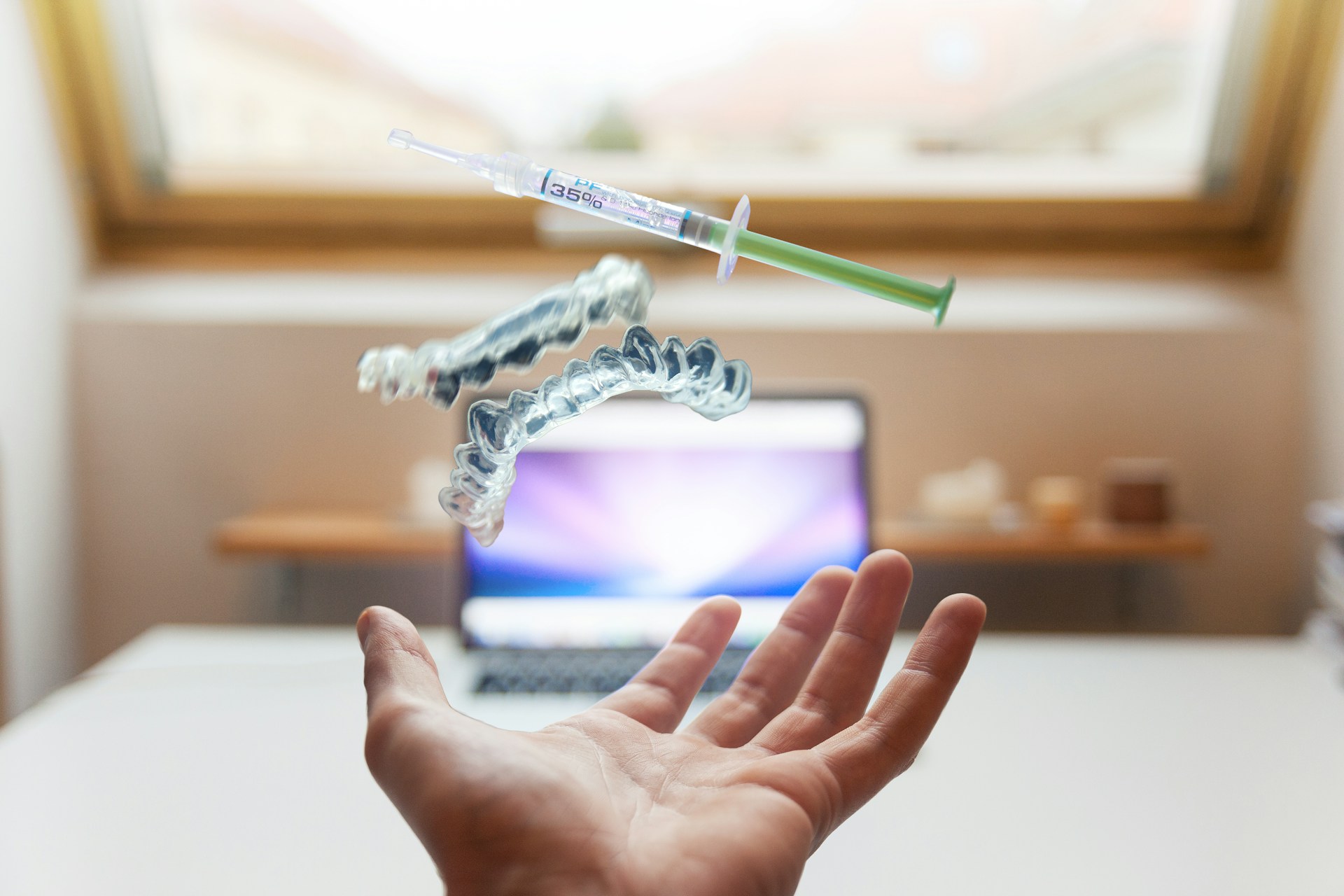
The science behind Invisalign merges advanced technology with the principles of dental science to promote effective tooth movement and create beautiful smiles.
By employing computer-aided design (CAD) and 3D printing technology, Invisalign produces precise aligners that are customised for each patient’s unique dental anatomy and treatment requirements.
This innovative method enhances the orthodontic treatment process, grounded in a thorough understanding of the biomechanics involved in tooth movement.
1. Computer-Aided Design (CAD)
Computer-aided design (CAD) is essential in the Invisalign treatment process, enabling dental professionals to create highly accurate models of patients’ teeth and gums. This technology allows for the development of digital treatment simulations that visualise the expected progression of tooth movement over time, ensuring that the treatment plan is tailored to the specific needs of each patient.
The incorporation of CAD technology not only improves the accuracy of aligner fabrication but also enhances the communication between orthodontists and patients. By offering a clear visual representation of anticipated results, individuals can gain a better understanding of their orthodontic journey, which ultimately leads to higher satisfaction and compliance.
Advanced orthodontic technologies associated with CAD, such as 3D printing and digital scanning, streamline the entire process. This reduces the time needed for adjustments and improves overall treatment efficiency.
The synergy between technology and patient care highlights the significant role CAD plays in modern orthodontics, paving the way for better outcomes and more informed patients.
2. 3D Printing Technology
3D printing technology plays a crucial role in the Invisalign system by enabling the precise fabrication of custom aligners designed specifically for each patient’s dental anatomy. This innovative approach not only streamlines the manufacturing process but also improves the accuracy and fit of the aligners, ensuring optimal effectiveness for tooth alignment.
By utilising advanced materials and efficient workflows, dental professionals can produce high-quality aligners more quickly, allowing them to adapt seamlessly to the unique contours of each patient’s mouth. The implementation of 3D printing not only shortens lead times but also reduces the likelihood of human error, resulting in fewer adjustments needed and a smoother experience for patients.
This level of customisation enhances patient satisfaction, as they receive aligners that are both comfortable and functionally superior. Such satisfaction encourages adherence to treatment plans, ultimately leading to improved clinical outcomes.
Therefore, the integration of 3D printing represents a significant advancement in dental innovation, benefiting both practitioners and patients alike.
3. Biomechanics of Tooth Movement
The biomechanics of tooth movement play a crucial role in understanding how Invisalign effectively achieves its orthodontic goals. By applying controlled pressure through custom aligners, Invisalign encourages the gradual movement of teeth into their proper positions. This process adheres to established orthodontic principles that govern tooth alignment and jaw positioning.
Each aligner is carefully crafted to deliver specific forces to selected teeth, making use of biomechanical principles to ensure reliable and predictable outcomes. As patients change their aligners every few weeks, this incremental pressure promotes natural bone remodelling, a process where the bone adapts to the new positions of the teeth.
Understanding the relationship between the forces exerted by the aligners and the body’s biological response is essential in orthodontic treatment. This knowledge helps ensure that teeth move efficiently while minimising undue stress or discomfort, thereby optimising both patient comfort and the overall treatment timeline.
How to Maintain Good Oral Health During Invisalign Treatment?
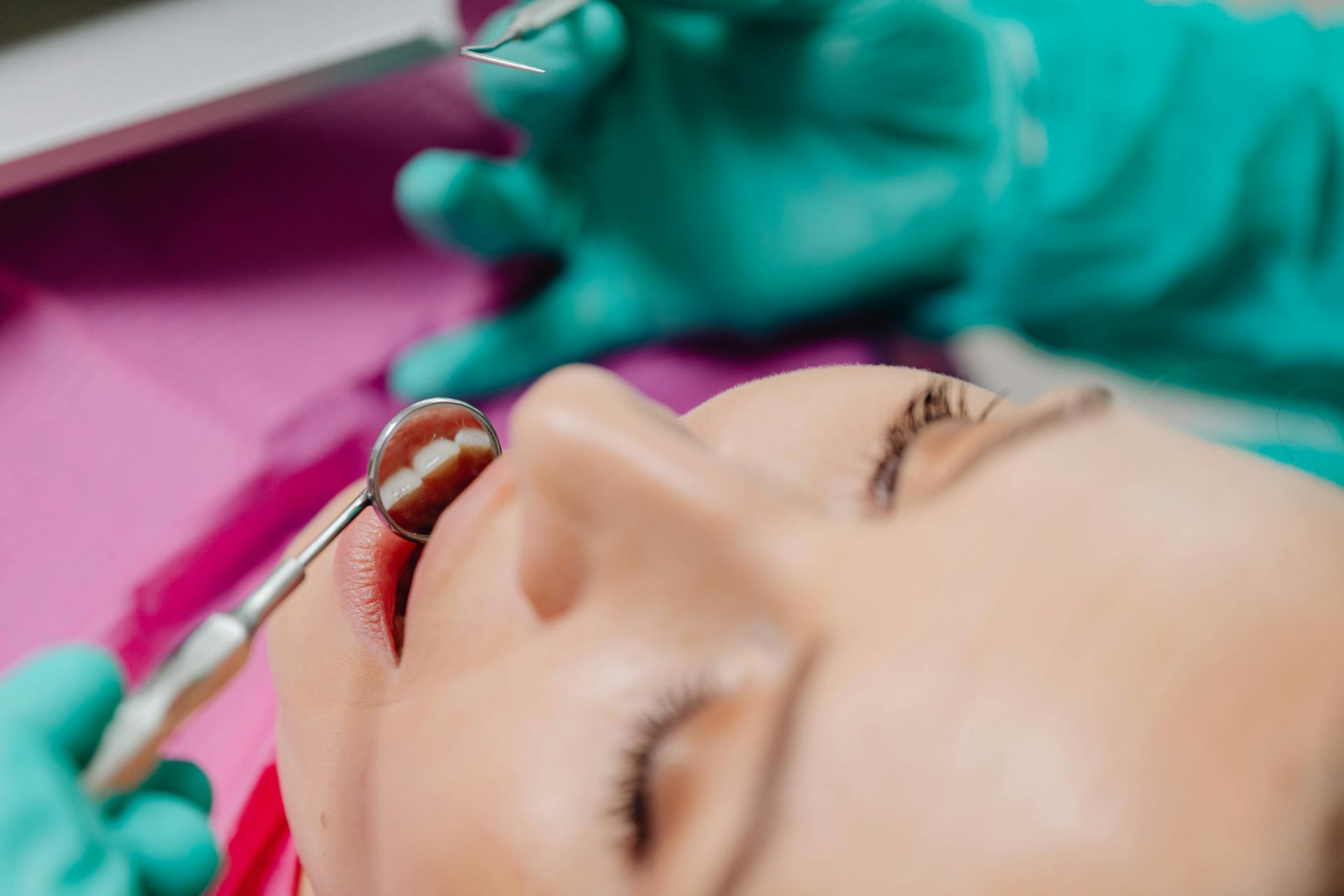
Maintaining good oral health during Invisalign treatment is crucial for achieving the best possible results and ensuring a smooth orthodontic journey.
Patients should be diligent about practising excellent oral hygiene, which includes regular brushing and flossing, as well as cleaning their aligners. This prevents the build-up of bacteria and plaque that could negatively affect dental health.
Furthermore, regular dental visits for assessments and progress monitoring play a vital role in keeping the treatment on track.
1. Brush and Floss Regularly
Brushing and flossing regularly are essential elements of good oral hygiene, particularly for those undergoing Invisalign treatment. It is important to apply proper brushing techniques to ensure that both the teeth and aligners are cleaned effectively, removing food particles and plaque to prevent cavities and gum disease.
To maintain a healthy mouth during this treatment, individuals should brush at least twice a day using fluoride toothpaste and a soft-bristled toothbrush. Each brushing session should last for two minutes, covering all surfaces of the teeth while ensuring that the aligners are rinsed and cleaned without causing damage.
Flossing holds equal importance and should be done daily. Using a floss threader or specialised orthodontic floss can facilitate this process when wearing aligners.
Additionally, regular visits to the dentist for check-ups are advisable, as they help monitor oral health and address any issues promptly, ensuring that the Invisalign journey remains smooth and effective.
2. Clean Your Aligners Properly
Maintaining proper hygiene for your aligners is crucial for both your oral health and the integrity of the aligners during Invisalign treatment. It is recommended that patients use a soft brush along with mild soap or specialised aligner cleaning products to gently clean the aligners, ensuring they remain clear and free from harmful bacteria.
Plus brushing, soaking the aligners in a solution specifically designed for cleaning can further eliminate any bacterial growth that may accumulate over time. Regular cleaning not only enhances oral health but also ensures that the aligners retain their transparency, which is essential for aesthetics.
Consistent care, such as rinsing the aligners after every meal, can significantly minimise plaque and odour buildup, leading to a more pleasant experience throughout the treatment.
Ultimately, adhering to a reliable cleaning routine can help individuals achieve optimal results and a confident smile.
3. Attend Regular Check-Ups
Attending regular check-ups with your dental professional is crucial for monitoring progress throughout your Invisalign treatment journey. These appointments give dental specialists the opportunity to assess tooth movement, make necessary adjustments to the treatment plan, and address any concerns that may arise during the process.
These visits play a key role in ensuring overall patient satisfaction, as they allow individuals to discuss their experiences and expectations. Open communication during these assessments enables professionals to customise the treatment to meet specific needs, ultimately leading to better outcomes.
By staying committed to these appointments, patients cultivate a sense of trust and partnership with their dental team, fostering a supportive environment that enables them to take charge of their oral health journey.
Frequently Asked Questions
What is Invisalign and how does it work?
Invisalign is a type of orthodontic treatment that uses clear aligners to straighten teeth. It works by gradually moving teeth into their desired positions using a series of custom-made aligners.
How does Invisalign differ from traditional braces?
Invisalign works differently from traditional braces as it does not use metal brackets or wires. Instead, it uses clear, removable aligners that are custom-made for each individual.
What is the science behind Invisalign’s ability to straighten teeth?
Invisalign uses a process called controlled force, where each set of aligners applies gentle pressure to specific teeth to gradually move them into the desired position. This process is based on the principles of orthodontic biomechanics and has been studied and refined by orthodontists.
How long does it take for Invisalign to work?
The length of treatment with Invisalign varies for each individual, but on average, it takes about 12-18 months to achieve straighter teeth. However, this can vary depending on the severity of the case and how well the patient follows the treatment plan.
Is Invisalign suitable for all types of orthodontic issues?
Invisalign is suitable for treating a variety of orthodontic issues, including crowded or spaced teeth, overbites, underbites, crossbites, and more. However, it is important to consult with an orthodontist to determine if Invisalign is the best treatment option for your specific case.
How can I ensure the success of my Invisalign treatment?
To ensure the success of your Invisalign treatment, it is important to wear the aligners for at least 22 hours a day as instructed by your orthodontist. It is also important to attend all scheduled appointments and follow any recommendations given by your orthodontist.

